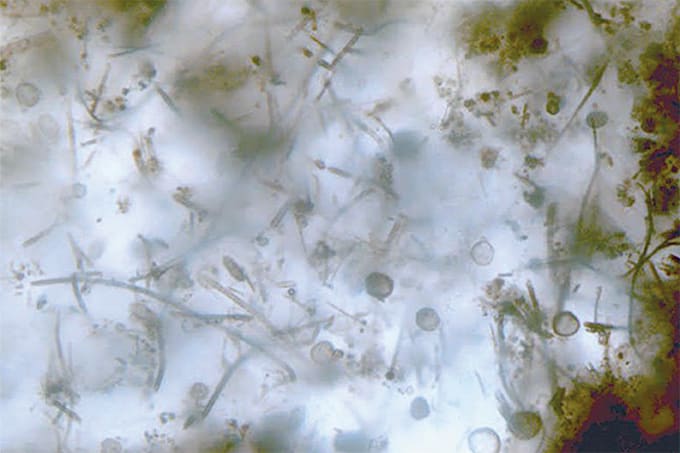Since their inception in the late 19th century, fingermark detection technologies have played a decisive role in criminal investigations, often providing essential evidence linking suspects to a crime. Yet, many fingermarks go undetected. “We know that we don’t detect all latent fingermarks – there’s some recent work by Scott Chadwick and co-workers that shows this (1),” says Simon Lewis, a researcher based in Perth, Australia. “If we better understand this chemistry then we could potentially improve these detection rates.” While much is known of the organic component of fingermarks, there is a major element that has not been investigated. The missing piece of the puzzle? Inorganic compounds – either originating in the body or transferred by handling everyday items such as coins or cosmetics.
Since their inception in the late 19th century, fingermark detection technologies have played a decisive role in criminal investigations, often providing essential evidence linking suspects to a crime. Yet, many fingermarks go undetected. “We know that we don’t detect all latent fingermarks – there’s some recent work by Scott Chadwick and co-workers that shows this (1),” says Simon Lewis, a researcher based in Perth, Australia. “If we better understand this chemistry then we could potentially improve these detection rates.” While much is known of the organic component of fingermarks, there is a major element that has not been investigated. The missing piece of the puzzle? Inorganic compounds – either originating in the body or transferred by handling everyday items such as coins or cosmetics.
Lewis and colleagues used the ANSTO Synchrotron facility in Melbourne to determine the distribution of the elemental and inorganic components of latent fingermarks using high-powered X-ray fluorescence microscopy (2). “Thanks to this synchrotron’s unique detector design and geometry, very large samples can be rapidly imaged at high spatial resolution,” says Mark Hackett, who worked with Lewis on the study. The result: highly detailed compositions detailing the distribution of metals and inorganic components of fingermarks. While synchrotron techniques are unlikely ever to become part of the forensic investigators’ toolbox, the results contribute to fundamental knowledge in this area. “Gaining a more complete overview of fingermark chemistry will provide an incentive for more robust detection methods in the future,” says Lewis.
The immediate applicability of the work is limited by a number of unanswered questions, which are now being studied by Rhiannon Boseley, a PhD student in Lewis’s group. For example, how much of these compounds are transferred in a fingermark? And what are the background levels? “We certainly don’t have the answers to all the questions yet,” says Lewis, “but we’re hopeful that work like ours can provide a framework for more detailed understanding of fingermark chemistry – now, and in the future.”
References
- S Chadwick et al., “Investigation of some of the factors influencing fingermark detection”, Forensic Sci Int, 289, 381 (2018). DOI: 10.1016/j.forsciint.2018.06.014
- RE Boseley et al., “Revealing the elemental distribution within latent fingermarks using Synchrotron sourced X-ray fluorescence microscopy”, Anal Chem, 91, 10622 (2019). DOI: 10.1021/acs.analchem.9b01843




